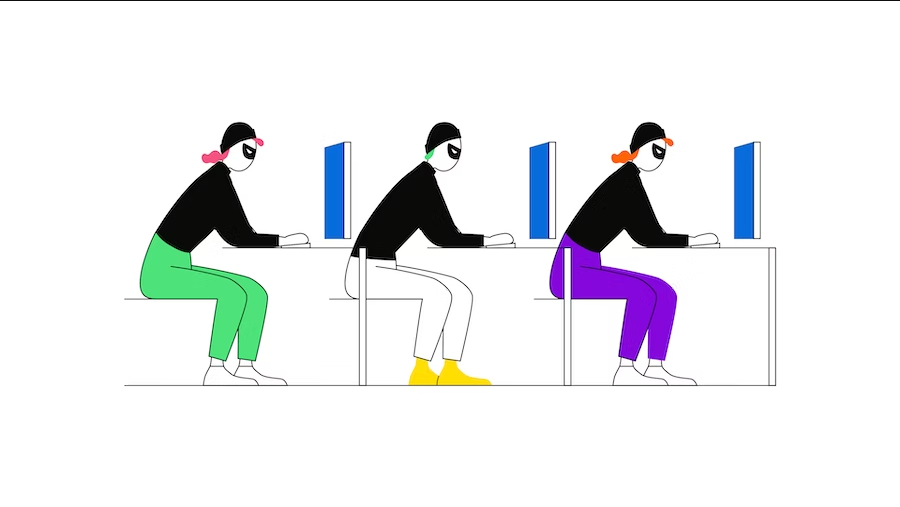You don't have to have a degree in economics to start investing. However, it is worth knowing about some common terms that are important when investing money and that are used repeatedly in media reports. For example, you will come across the terms "national economy" or "macroeconomics" again and again. If this sounds complicated, don't worry. As is often the case when discussing financial topics, there is something quite ordinary behind them.
By "economy" we mean, to put it simply, everything that relates to the consumption and production of goods. For example: you buy a pair of shoes, a sawmill produces boards, your cousin is waiting for the delivery of their new cargo bike for her restaurant, the games console of your dreams has been sold out for months, you get little interest on your savings and you read on Twitter that the demand for cars is falling.
In the broadest sense, the topic of economics is about the activities of all participants that are connected to the economy in an economic area - a geographically limited space like a country. These participants are not only businesses, but also private households, government institutions and the public sector.
What is the economy?
The term "economy" comes from the Latin words "coniungere" and "coniunctura" and means "to connect" and "to link". In other words, in general terms, it describes the situation of the economy resulting from the connections and actions of the participants in an economy.
In more general terms, the goal is to have an economy that performs well for all participants, of course. This is defined, for example, by the so-called "magic square": steady and adequate economic growth (self-explanatory), high employment (the unemployment rate is low), stable prices (self-explanatory) and external balance (import and export of goods is more or less balanced).
Of course, connections in an economy are constantly changing and depend on many interconnected factors. In general, the supply and demand of goods leads to changes in how production capacities are used. The inflation rate, government spending, revenues and investments made by companies and many other influences also play a role. Increases and decreases in government spending and revenues can also affect the advancement or suppression of economic connections.
What does the term “economic cycle” mean?
The recurrent changes in the economic cycle lead to different phases, the cyclical phases, each of which is characterised by different features and reveals both peaks and dips in the economy's development. Historically, the representation of these fluctuations proceeds with a certain regularity. This is why a business cycle can be represented on a chart in the broadest sense by a curve in wave form with peaks and dips. A pass through the wave from one peak to the next peak is called an "economic cycle".
What phases does the economic cycle consist of?
It has been shown that a distinction can be made between four phases that are constantly repeated.
During a boom, the cycle of a national economy goes through a peak phase. There are more vacancies at companies than people looking for work. This is called full employment - here companies are competing with each other for employees. Prices, wages and interest rates rise and households increase their consumption. A tipping point then occurs, which brings overheating. Everyone remains optimistic that the "good times" will always continue, but the market is already saturated: demand is more or less satisfied at this point and market growth is hardly possible.
A short stagnation (a kind of standstill) then occurs, followed by a gradual downturn, the so-called recession. Demand continues to decline, company order numbers and wages fall and unemployment rises again. Capacities created during the boom are also no longer fully utilised and production plants are shut down. In addition, prices and interest rates fall, often in conjunction with stock market prices, and households start to save.
If there is no positive economic development - an upswing - over a longer period of time, the bottom of an economic cycle, a phase of depression, is reached. The negative developments of the recession continue. Generally, the phase of depression is considered a severe, economic emergency for a country. Nevertheless, the term is also used as a synonym for an economic crisis.
The development (growth or decline) is also made visible in the so-called gross domestic product (GDP) of an economy. GDP is a key figure and describes the economic performance of a country, namely the value of all services and goods produced in that country during the duration of a year. Most often, an increase or decrease in GDP is expressed as a percentage compared to an earlier point in time.
The upswing phase following the dip marks the beginning of an expansion. Orders start to rise again and this leads to more investments. The outlook for the future (also referred to as "forecasts") and the general mood in the economy are optimistic. Prices start to climb slightly, the number of job seekers declines, and interest rates are still low. Wages and household consumption rise again and the transition to the boom phase takes place.
What should be considered when investing?
If you invest in an asset regularly over a long period of time, market developments tend to play a smaller role in its performance. With Bitpanda Savings, you can invest in various assets such as Bitpanda Stocks*, crypto and precious metals - it's best to choose your favourite assets and think about how often you want to invest: once a week, every fortnight or every month, it's entirely up to you.
Simply download the Bitpanda mobile app for iOS or Android on your mobile phone, register and verify yourself within a few minutes, choose your preferred payment option and deposit your starting balance - you can register your Bitpanda account here.
*Bitpanda Stocks enables investing in fractional stocks. Fractional stocks in Europe are always enabled via a contract which replicates the underlying stock or ETF (financial instruments pursuant to section 1 item 7 lit. d WAG 2018). Investing in stocks and ETFs carries risks. For more details see the prospectus at bitpanda.com.
 Commodities* Invest in commodities 24/7
Commodities* Invest in commodities 24/7 BITCOIN What to know when you are just starting to invest
BITCOIN What to know when you are just starting to invest ASSET MANAGEMENT Your investment, your assets: Why your money is safe with Bitpanda
ASSET MANAGEMENT Your investment, your assets: Why your money is safe with Bitpanda COUNTDOWNBitcoin Halving Countdown 2024
COUNTDOWNBitcoin Halving Countdown 2024 ACADEMYWhat is the Bitcoin halving?
ACADEMYWhat is the Bitcoin halving?






